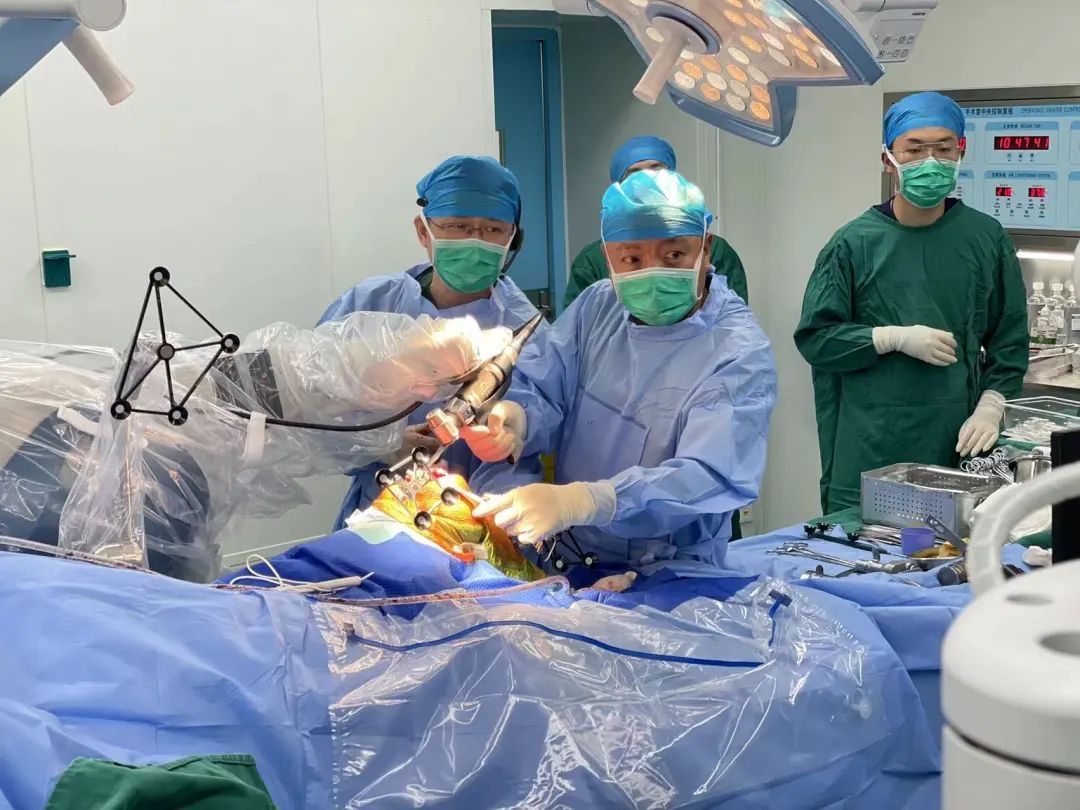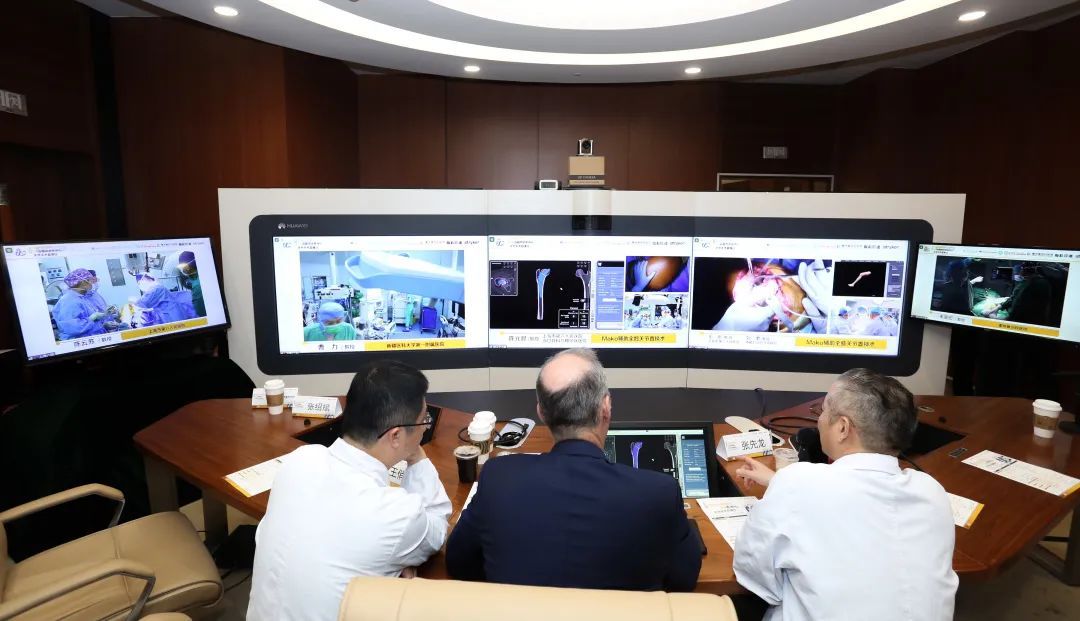“Having my first experience with robotic surgery, the level of precision and accuracy brought about by digitization is truly impressive,” said Tsering Lhundrup, a 43-year-old deputy chief physician in the Department of Orthopedics at the People’s Hospital of Shannan City in the Tibet Autonomous Region. On June 5th at 11:40 a.m., after completing his first robotic-assisted total knee replacement surgery, Lhundrup reflected on his previous three to four hundred surgeries. He acknowledged that especially in high-altitude regions, robotic assistance makes surgeries safer and more effective by addressing the challenges of uncertain visualization and unstable manipulation for the doctors.

On June 5th, remote synchronized multi-center 5G robotic hip and knee joint replacement surgeries were conducted in five locations, led by Professor Zhang Xianlong’s team from the Department of Orthopedics at the Sixth People’s Hospital of Shanghai. The surgeries took place at the following hospitals: the Sixth People’s Hospital of Shanghai, Shanghai Sixth People’s Hospital Haikou Orthopedics and Diabetes Hospital, Quzhou Bang’er Hospital, People’s Hospital of Shannan City, and the First Affiliated Hospital of Xinjiang Medical University. Professor Zhang Changqing, Professor Zhang Xianlong, Professor Wang Qi, and Professor Shen Hao participated in remote guidance for these surgeries.
At 10:30 a.m. on the same day, with the assistance of remote technology, the Shanghai Sixth People’s Hospital Haikou Orthopedics and Diabetes Hospital performed the first remote robotic-assisted total hip replacement surgery based on the 5G network. In traditional manual joint replacement surgeries, even experienced surgeons typically achieve an accuracy rate of around 85%, and it takes at least five years to train a surgeon to perform such surgeries independently. The advent of robotic surgery has brought about a transformative technology for orthopedic surgery. It not only significantly shortens the training period for doctors but also helps them achieve standardized and precise execution of each surgery. This approach brings faster recovery with minimal trauma to patients, with surgical accuracy approaching 100%. As of 12:00 p.m., the monitoring screens at the Remote Medical Center of the Shanghai Sixth People’s Hospital showed that all five joint replacement surgeries, conducted remotely from different locations across the country, had been successfully completed.
Precise positioning, minimally invasive techniques, and personalized design—Professor Zhang Xianlong from the Department of Orthopedics at the Sixth Hospital emphasizes that robotic-assisted surgery has significant advantages over traditional procedures in the field of hip and knee joint replacements. Based on 3D modeling, doctors can have a visual understanding of the patient’s hip socket prosthesis in three-dimensional space, including its positioning, angles, size, bone coverage, and other data. This information allows for personalized surgical planning and simulation. “With the assistance of robots, doctors can overcome the limitations of their own cognition and blind spots in their field of view. They can meet the patients’ needs more accurately. Additionally, through the synergy between humans and machines, the standards for hip and knee joint replacements are constantly evolving, resulting in better service for patients.”
It is reported that the Sixth Hospital successfully completed the first domestic robotic-assisted unicondylar knee replacement surgery in September 2016. As of now, the hospital has performed over 1500 joint replacement surgeries with robotic assistance. Among them, there have been around 500 cases of total hip replacement surgeries and nearly a thousand cases of total knee replacement surgeries. According to the follow-up results of existing cases, the clinical outcomes of robotic-assisted hip and knee joint replacement surgeries have shown superiority over traditional surgeries.
Professor Zhang Changqing, Director of the National Center for Orthopedics and the leader of the Department of Orthopedics at the Sixth Hospital, commented on this by saying, “The interaction between humans and machines promotes mutual learning and is the trend for future orthopedic development. On the one hand, robotic assistance shortens the learning curve for doctors, and on the other hand, clinical requirements drive continuous iteration and improvement of robotic technology. The application of 5G remote medical technology in conducting simultaneous surgeries across multiple centers reflects the exemplary leadership of the National Center for Orthopedics at the Sixth Hospital. It helps amplify the radiating effect of high-quality medical resources from the ‘national team’ and promotes collaborative development in remote areas.”
In the future, the Sixth Hospital of Shanghai will actively harness the power of “smart orthopedics” and lead the development of orthopedic surgeries towards minimally invasive, digital, and standardized approaches. The aim is to enhance the hospital’s capacity for independent innovation and international competitiveness in the field of intelligent orthopedic diagnosis and treatment. Additionally, the hospital will replicate and promote the “Sixth Hospital experience” in more grassroots hospitals, thereby further elevating the medical service level of regional medical centers nationwide.
Post time: Jun-28-2023












